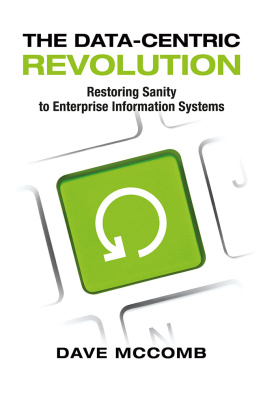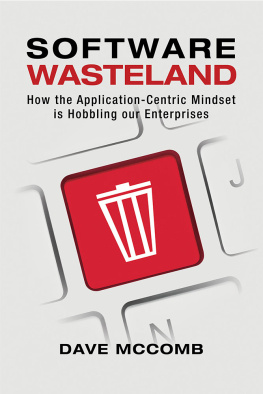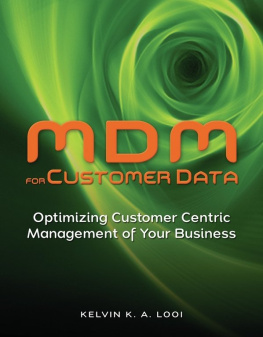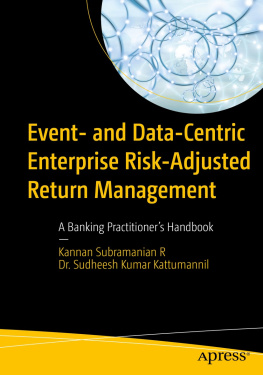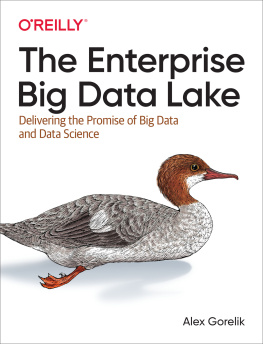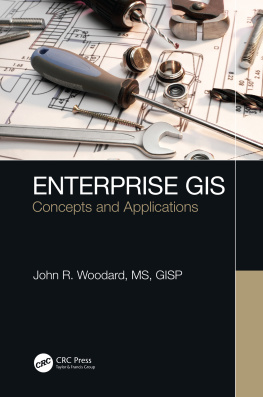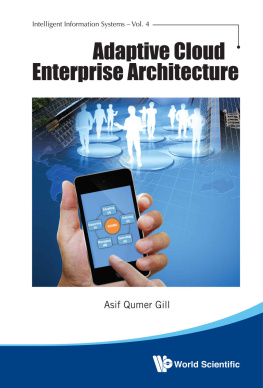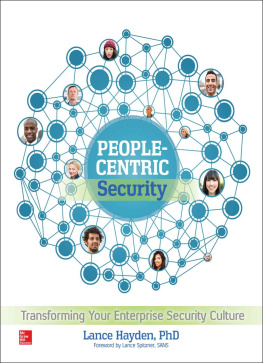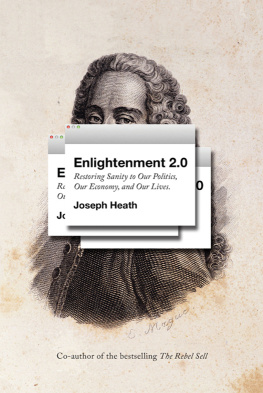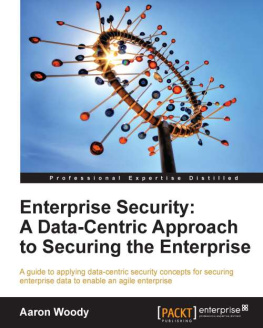Dave McComb - The Data-Centric Revolution: Restoring Sanity to Enterprise Information Systems
Here you can read online Dave McComb - The Data-Centric Revolution: Restoring Sanity to Enterprise Information Systems full text of the book (entire story) in english for free. Download pdf and epub, get meaning, cover and reviews about this ebook. year: 2019, publisher: Technics Publications, genre: Computer. Description of the work, (preface) as well as reviews are available. Best literature library LitArk.com created for fans of good reading and offers a wide selection of genres:
Romance novel
Science fiction
Adventure
Detective
Science
History
Home and family
Prose
Art
Politics
Computer
Non-fiction
Religion
Business
Children
Humor
Choose a favorite category and find really read worthwhile books. Enjoy immersion in the world of imagination, feel the emotions of the characters or learn something new for yourself, make an fascinating discovery.
- Book:The Data-Centric Revolution: Restoring Sanity to Enterprise Information Systems
- Author:
- Publisher:Technics Publications
- Genre:
- Year:2019
- Rating:3 / 5
- Favourites:Add to favourites
- Your mark:
- 60
- 1
- 2
- 3
- 4
- 5
The Data-Centric Revolution: Restoring Sanity to Enterprise Information Systems: summary, description and annotation
We offer to read an annotation, description, summary or preface (depends on what the author of the book "The Data-Centric Revolution: Restoring Sanity to Enterprise Information Systems" wrote himself). If you haven't found the necessary information about the book — write in the comments, we will try to find it.
Dave McComb: author's other books
Who wrote The Data-Centric Revolution: Restoring Sanity to Enterprise Information Systems? Find out the surname, the name of the author of the book and a list of all author's works by series.
The Data-Centric Revolution: Restoring Sanity to Enterprise Information Systems — read online for free the complete book (whole text) full work
Below is the text of the book, divided by pages. System saving the place of the last page read, allows you to conveniently read the book "The Data-Centric Revolution: Restoring Sanity to Enterprise Information Systems" online for free, without having to search again every time where you left off. Put a bookmark, and you can go to the page where you finished reading at any time.
Font size:
Interval:
Bookmark:
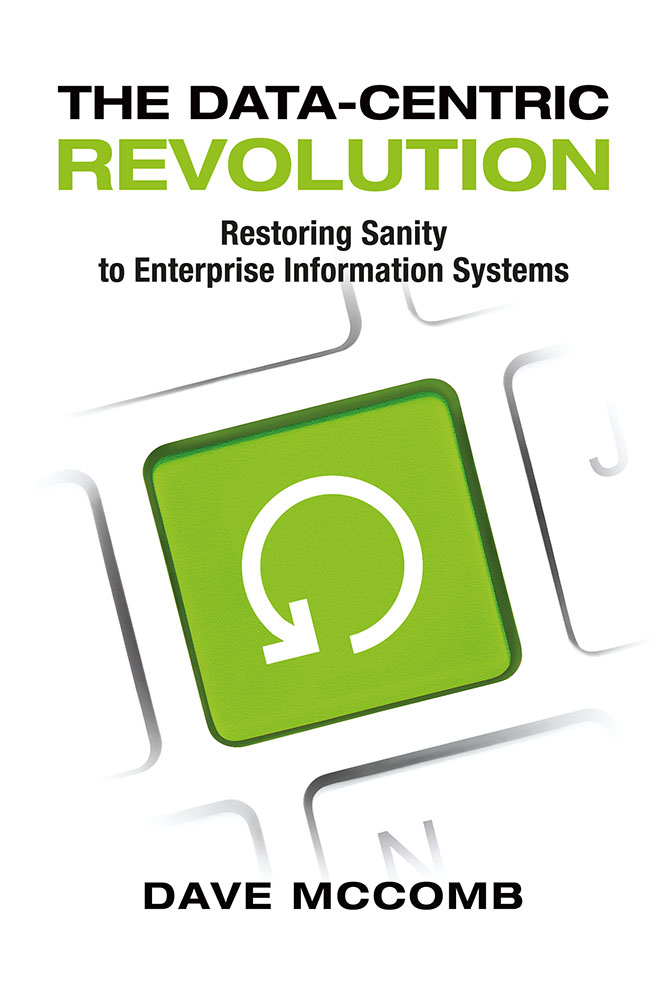
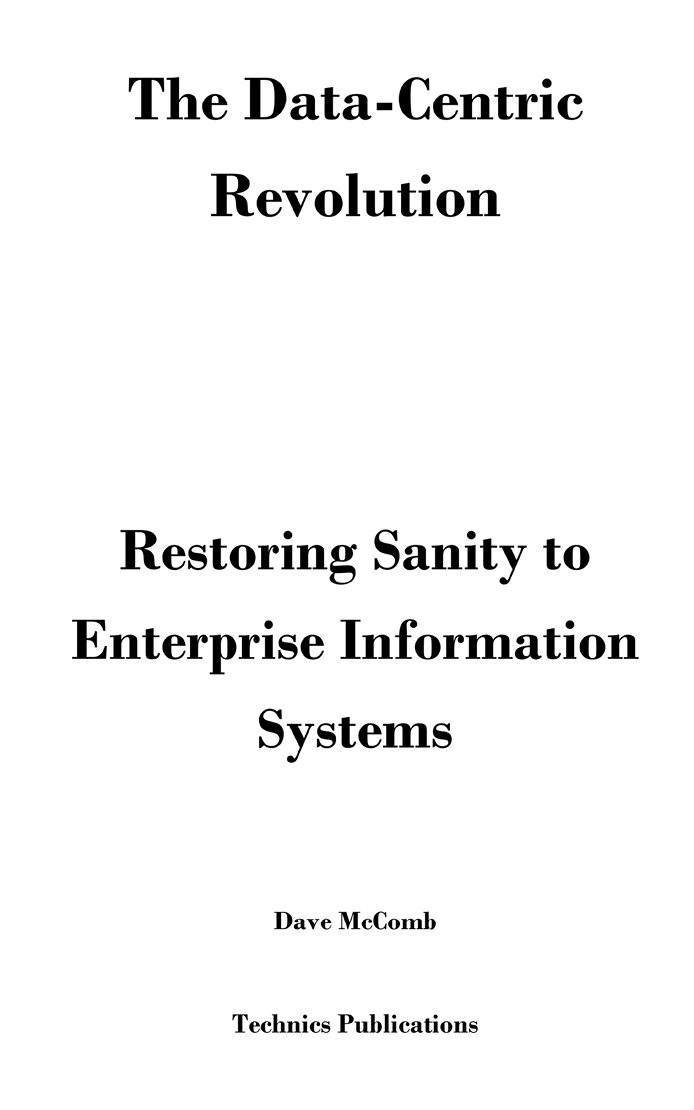
Published by:

2 Lindsley Road
Basking Ridge, NJ 07920 USA
https://www.TechnicsPub.com
Edited by Lauren McCafferty
Cover design by Lorena Molinari
All rights reserved. No part of this book may be reproduced or transmitted in any form or by any means, electronic or mechanical, including photocopying, recording or by any information storage and retrieval system, without written permission from the publisher, except for the inclusion of brief quotations in a review.
The author and publisher have taken care in the preparation of this book, but make no expressed or implied warranty of any kind and assume no responsibility for errors or omissions. No liability is assumed for incidental or consequential damages in connection with or arising out of the use of the information or programs contained herein.
All trade and product names are trademarks, registered trademarks, or service marks of their respective companies, and are the property of their respective holders and should be treated as such.
First Printing 2019
Copyright 2019 by Dave McComb
ISBN, print ed. 9781634625401
ISBN, ePub ed. 9781634625425
ISBN, PDF ed. 9781634625432
Library of Congress Control Number: 2019905464

Prelude
This book is the first part of a trilogy to follow Software Wasteland . In Software Wasteland , we detailed how bad the current state of the art of application software development is. We offered some tactical advice for reducing some of the worse of the excess.
This book began as the companion book; the what to do instead book. But as I started writing it, I realized that there were three audiences not well-served with a single volume.
So, we now have the companion trilogy:
- The Data-Centric Revolution (this volume). Targeted at the executives who will have to champion this movement within each of their firms.
- The Data-Centric Pattern Language . A set of over 100 patterns, presented in the style that Christopher Alexander made famous. The data modelers and ontologists who will design this future state will find this volume most useful. This future is enough different from the present, and old habits die hard, so the second volume is to help designers avoid the temptation to backslide.
- The Data-Centric Architecture . Early adopters have been building their own architecture to support their Data-Centric implementations. Were going to take what we have learned from them and our own experience to construct a blueprint to allow enterprises to adopt this approach as their own, or for enterprising software entrepreneurs to build the platforms of tomorrow. You cannot implement the systems were talking about in this volume with the architecture you have now. The good news is that this next generation architecture is far simpler than the ones youve been dealing with, and you may be able to reuse many components of the architecture you have now.
Before we start, Im going to make two apologies, and then retract them. There are two aspects of this book that you may not like, I understand that. At the same time and after a lot of reflection, I dont think I could get the point across without them.
The first apology is for getting too technical in a volume for executives. But what weve noticed is the early proponents of this approach have embraced the technical differences that this approach enables and requires. Weve noticed the successful executives have been the ones that embrace enough of this technology to stand up to critics and naysayers. This isnt a simplistic endeavor where youll be able to get away with simply asking for the ROI. You wont need to know how to build an ontology yourself, but you will need to know enough to be apprised of what the rest of your team is doing.
The second apology is for the grandiosity of this. As you will soon see, the tone of this is not that this is the next great technology, or that this is an incremental improvement that you can add to your existing repertoire. A very large industry stands in your way, if you take this up. This requires a lot of people changing the way they think, and people need incentive to change. Your firm will need to change the way they think about sharing information. I harp on paradigm change because I think its essential to have an idea of the challenges that may lie ahead.
So, there you have it. Im aware of these two flaws in this book. Im aware that I am subjecting you to this. I apologize for that.
And I retract my apology. I couldnt think of another way to make the points as forcibly as I think is deserved. I hope you can cut me some slack; I made it as short as I could.
Thank you for picking this up. Welcome to the revolution.
CHAPTER 1
The Data-Centric Movement
We are at a turning point in the way we manage enterprise information. Every year the amount of data available to enterprises doubles, while the ability to effectively use it decreases. Were spending 3-8% of gross revenue on application systems that are frustratingly hard to change at a time when the pace of change needs to increase. Executives lament their legacy systems, but projects to replace them end up with moon shot budgets and rarely succeed.
There is a way out. It is not a technology quick fix. It requires discipline and understanding that we must view the entire landscape of enterprise IT through a different lens. We call this lens the Data-Centric approach.
As we detail in Software Wasteland , the prevailing mindset for managing enterprise information systems is the application-centric approach. In the application-centric approach, business problems beget projects that beget application systems. It doesnt matter whether the application system is built, bought or implemented as a service. It doesnt matter what technology is employed. Each additional application, encouraged through the application-centric mindset, creates and manages yet another data model. Over time the result of this approach leads to thousands of applications and therefore thousands of complex data models. Rather than improving access to important information this approach has been steadily eroding it, as the multiplication and variety of models obscures understanding, unnecessarily increases the cost of integration and increases the cost of change. The more firms double down on the application-centric approach, the more stuck they become.
There is a way out: the Data-Centric approach. It is not something you can buy. It is something you must do. It requires first seeing the landscape and the problems differently, and then having the discipline to change course.
This will not be an easy or rapid transition. Many firms will never make the transition.
In many ways this is comparable to the second stage of the industrial revolution when small stand-alone electric motor-driven machines displaced centralized steam and crankshaft-driven workstations.

As Brian Arthur points out in The Nature of Technology , it was obvious as early as 1880 that new electric motors would transform the industrial revolution, but this transition took over 40 years to play out. There is a parallel here between the transition from steam to electricity and the transition from application-centric to Data-Centric methods. It was not lack of technology that slowed the transition from steam to electricity, just as it is not a lack of technology that prevents the transition from application-centric to Data-Centric methods. One of the things that held back the steam to electricity transition (and will likely slow it for the transition to Data-Centric) was a tight-knit network of experts who reinforced the status quo.
Font size:
Interval:
Bookmark:
Similar books «The Data-Centric Revolution: Restoring Sanity to Enterprise Information Systems»
Look at similar books to The Data-Centric Revolution: Restoring Sanity to Enterprise Information Systems. We have selected literature similar in name and meaning in the hope of providing readers with more options to find new, interesting, not yet read works.
Discussion, reviews of the book The Data-Centric Revolution: Restoring Sanity to Enterprise Information Systems and just readers' own opinions. Leave your comments, write what you think about the work, its meaning or the main characters. Specify what exactly you liked and what you didn't like, and why you think so.

